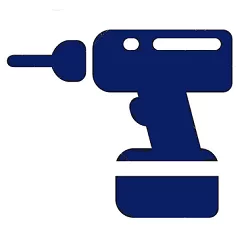Appliance Types
- Air Conditioner
- Automobile
- Chainsaw
- Circular Saw
- Dishwasher
- Drills
- Dryer
- Drywall Screw Gun
- Furnace
- Gas Fireplace
- Gas Grill
- Gas Patio Heater
- Grinder
- Heat Pump
- Impact Driver
- Impact Wrench
- Microwave
- Nailer
- Orbital Sander
- Pool Heaters
- Powerwall
- Range
- Refrigerator
- Television
- Washer
- Water Heater
Appliance Brands
- A.O. Smith
- AccuCold
- Admiral Craft
- AGA
- Airrex
- Amana
- Ambiance
- American Range
- American Standard
- American Water Heaters
- Aquacal
- Armstrong
- Asko
- Avanti
- Avenlur
- Azure
- Beko
- Bellfires
- Bertazzoni
- Blackstone
- Blaze
- Blomberg
- BlueStar
- Bosch
- Bradford White
- Bromic
- Bryant
- Cafe
- Calcana
- Capital
- Carrier
- Char-Broil
- Char-Griller
- Chrysler
- Coates
- Coleman
- Comfortmaker
- Commercial Chef
- Continental
- Cosmo
- Cove
- Crown Verity
- Dacor
- Daikin
- Danby
- Danfoss
- DaVinci
- DCS
- Deco
- DeWALT
- Ducane
- Dyna-Glo
- Dyson
- EcoSmart
- Electrolux
- Element4
- Empava
- Equator
- Eurodib
- European Home
- Everdure
- Farberware
- Fhiaba
- FibroPool
- Fire Sense
- Fisher
- FiveStar
- Flare
- Flash Furniture
- Focus
- Ford
- Forno
- Forte
- Frigidaire
- Fulgor Milano
- Gaggenau
- GE
- General Motors
- GlowBrand
- Goodman
- Grundig
- GSW
- Haier
- Hayward
- Heatstar
- Heil
- Hestan
- Hisense
- Hitachi
- Hotpoint
- iio
- Ilve
- Impecca
- Ingignia
- Insignia
- JennAir
- John Wood
- Keeprite
- Kenmore
- Kenyon
- KitchenAid
- Kucht
- La Cornue
- Lennox
- LG
- Liebherr
- Lifetime
- Lion
- Luxaire
- Lynx
- Magic Chef
- Marvel
- Maytag
- McQuay
- MicroFridge
- Midea
- Miele
- Migali
- Monogram
- Montigo
- Mr Heater
- Napoleon
- Navien
- Nexgrill
- Noritz
- Panasonic
- Patio Comforts
- Payne
- Pentair
- Perlick
- PITT
- Premier
- Raypak
- Real Fyre
- Regency
- Reliance
- Rheem
- Rinnai
- Roma
- Ruud
- Saber
- Samsung
- Schwank
- Sharp
- Smeg
- Solas
- Sony
- Spartherm
- Speed Queen
- StaRite
- State Water Heaters
- Stiebel Eltron
- SubZero
- Summerset
- Summit
- SunGlo
- SunPak
- Sunpentown
- SunStar
- Superiore
- Takagi
- TCL
- TEC
- Tempstar
- Tesla
- Thermador
- Thor Kitchen
- Toshiba
- Town and Country
- Toyota
- Traeger
- Trane
- Twin Eagles
- U-Line
- Unique
- Vaillant Group
- Valor
- Verona
- Victory
- Viessmann
- Viking
- Vizio
- Weber
- Westinghouse
- Whirlpool
- Whynter
- York
- ZLINE
Article Categories
- Air Conditioners
- Appliance Care
- Appliance News
- Dishwasher News
- Drying Machines
- Furnaces
- Gas Fireplaces
- Microwaves
- Pool Heaters
- Refrigerators
- Stoves - Ranges
- Tips and Tricks
- Washing Machines
- Water Heaters
More Articles

Drills Repair
Power tools are tools that are powered by electricity, batteries, or compressed air to perform various tasks, typically more efficiently and with less manual effort than traditional hand tools. These tools are widely used in construction, woodworking, metalworking, and various other industries. Power tools can be categorized based on their power source, function, and application. Some common types of power tools include: Electric Drills: Used for drilling holes in various materials. They come in corded and cordless versions. Circular Saws: A versatile saw used for cutting wood, metal, plastic, and other materials in straight or angled lines. Jigsaws: Designed for cutting curves and irregular shapes in wood, metal, and plastic. Power Screwdrivers: Electric or battery-powered tools designed to drive screws quickly and efficiently. Angle Grinders: Used for cutting, grinding, and polishing metal, stone, and other materials. Sanders: Including orbital sanders, belt sanders, and random orbital sanders, used for smoothing surfaces by abrasion. Reciprocating Saws: Known for their push-and-pull blade motion, used for cutting wood, metal, and plastic. Power Planers: Used to shave and smooth the surface of wooden boards. Router: A tool used for hollowing out an area in wood or other materials, often used in woodworking for creating decorative edges. Impact Wrenches: Designed for quickly tightening or loosening nuts and bolts, commonly used in automotive repair. Rotary Hammers: A powerful tool used for drilling into hard materials like concrete or masonry. Nail Guns: Used for driving nails into wood or other materials quickly and efficiently. Cordless Screwdrivers: Compact tools designed for driving screws with precision, powered by rechargeable batteries. Heat Guns: Used for applying heat to a surface, useful for tasks like paint stripping, plastic molding, and thawing frozen pipes. Cordless Multi-Tools: Versatile tools that can perform various tasks such as cutting, sanding, and scraping, all in one compact device. Power tools offer efficiency, speed, and precision in various applications, making them essential for professionals in construction, woodworking, automotive repair, and other industries. When using power tools, it's important to follow safety guidelines and wear appropriate protective gear to prevent accidents and injuries.
Repairing a power drill can involve various steps depending on the specific issue. Here are some general steps for common power drill repairs:
Disassembly:
Disconnect the drill from the power source or remove the battery (for cordless drills).
Use appropriate tools to disassemble the drill carefully, keeping track of removed components.
Inspect for Visible Damage:
Examine the power cord, plug, and connections for any visible damage.
Check the drill housing for cracks, wear, or signs of impact.
Testing Power Source:
Verify that the power outlet and extension cord (if applicable) are functioning correctly.
For cordless drills, ensure the battery is charged and in good condition.
Chuck Repair or Replacement:
If the chuck is not holding bits securely, inspect for debris or damage.
Clean or replace the chuck, ensuring proper tightening.
Battery Replacement (Cordless Drills):
If the battery is not holding a charge, consider replacing it.
Check for corrosion or damage on the battery contacts and clean if necessary.
Motor Inspection:
Listen for unusual noises or vibrations when the drill is running.
Inspect the motor for signs of damage, wear, or obstruction.
Brush Replacement:
If the drill motor is weak or intermittent, check the carbon brushes for wear.
Replace brushes if they are significantly worn down.
Switch or Trigger Repair:
Inspect the switch or trigger for proper functionality. Clean or replace if necessary.
Check the wiring from the switch to the motor for loose or damaged connections.
Bearings and Gears:
Examine bearings and gears for wear. Lubricate or replace as needed.
Testing the Drill:
Reassemble the drill carefully, ensuring all parts are correctly aligned and tightened.
Reconnect the drill to the power source or insert the battery.
Test the drill's functionality.
Professional Assistance:
If the issue persists or if you're unsure about the repair, seek assistance from the tool manufacturer's service center or an authorized repair technician.
Always prioritize safety during the repair process. If you're uncomfortable or uncertain about any repair steps, consult with a professional technician. Manufacturers often provide support and guidance through customer service channels, and authorized repair centers can offer expert assistance.




